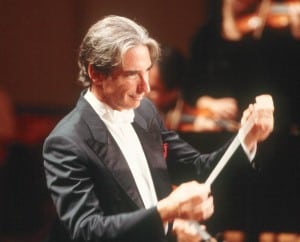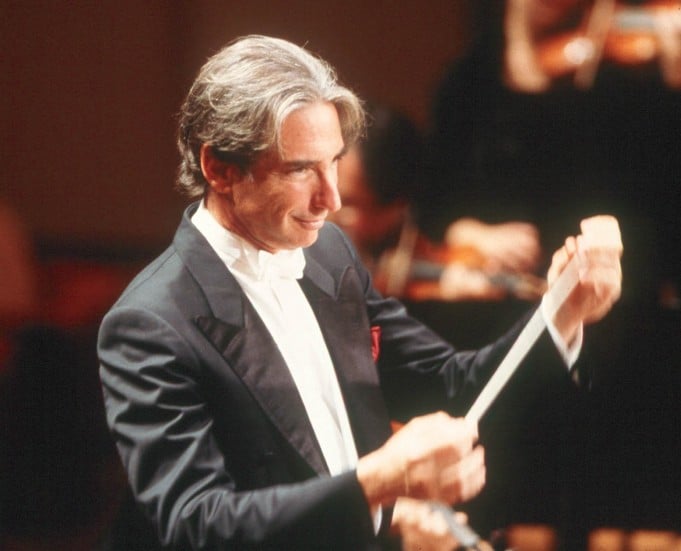
For Mozart’s birthday the SF Symphony featured Michael Tilson Thomas, the symphony’s music director, playing and conducting Mozart’s Piano Concerto Number 23 in A Major, K 488, as well as two not frequently played works by Stravinsky – his Octet (for winds and brasses) and his Pulcinella Suite.
Stravinsky Octet
The concert started with the Stravinsky Octet, which although being a chamber music piece is so tricky that it is usually performed with a conductor. Last night, they played without a net, performing with no conductor. I was immediately impressed with how tight (together) they played, and they maintained a nice balance (no instrument overpowering the other), which is often a challenge given the physics of a flute vs. a trumpet or trombone.
The second movement (Theme and Variations) was striking – not only in terms of the brilliance of Stravinsky’s composition (who had never previously written a Theme and Variations), but also in the technical excellence and ensemble playing through some extremely difficult passages – I feel compelled to acknowledge the virtuosity of the bassoons.
While this piece might be a little difficult for some listeners upon first hearing, this listener enjoyed Stravinsky’s humorous rapid shifts in color, tone, rhythm, and texture, and his deliberate use of winds and horns (a conscious choice he described in an article he wrote about the piece) to “render more evident the musical architecture.” I also applaud the ensemble’s courage in performing sans conductor.
Mozart Piano Concerto Number 23 in A Major, K 488
It being Mozart’s birthday, the highlighted piece was MTT performing and conducting Mozart’s Piano Concerto No. 23 in A Major.
First, let’s start with a definition of “Concerto”: “a composition (usually in symphonic form with three movements) in which one instrument (or two or three) stands out in bold relief against the orchestra, or accompaniment, so as to display its qualities or the performer’s skill” (from brainyquote.com)
Orchestra players often joke about calling concertos, especially piano concertos, as being for “piano vs. orchestra” instead of “piano and orchestra”. I think there are three contributing factors here. First, most of the “warhorse” piano concertos were written by virtuoso pianists who had both amazing virtuoso technique as well as world-class egos and were creating showpieces for themselves. Second, the modern-day classical music is all about promoting the winners of major competitions (such as the Cliburn) who then tour with their repertoire of big warhorse concertos, but who often have little or no sensitivity or desire to create an ensemble performance with an orchestra. Thirdly, both young and established pianists must tour frequently (over 100 concerts a year), meaning they fly into a new city, get a rehearsal in with a new orchestra (and conductor), perform 2 or 3 times, and then jet out to the next stop. It’s very difficult to build any kind of meaningful rapport or ensemble in such a short amount of time.
MTT’s performance with his “own team” was remarkably different from this typical “piano vs. orchestra” experience. From the opening phrase, with MTT conducting from the piano bench, I was struck by the sense of MTT as “player/coach” but a full member of the team – neither conductor with baton on the podium nor flashy rock star piano star standing on the shoulders of the orchestra as “accompanist”. This particular concerto is one of the most “chamber music-like” of the literature, in that the piano part is less flashy and brilliant than most others, and so these “social dynamics” were even more appropriate, not to mention refreshing.
That said, this reviewer felt much of MTT’s performance as a pianist somewhat confined and constrained – there were many passages where I wanted just a little more brilliance, energy, or power from the piano – and especially more showmanship during the cadenzas (which were MTT’s own creations based on Mozart’s own transcribed improvisations in the original manuscript). Interestingly I most enjoyed MTT’s tone in the softer and slower Adagio movement – here he produced a richer, more lyric legato tone than in the other two faster movements.
MTT’s directing from the piano was true MTT – engaging, appropriate, and even jocular and humorous. It’s a special treat for the audience to see him directing from the piano, since his face is much more visible when he is facing the side rather than the back of the stage. Overall this reviewer found it a truly enjoyable, somewhat memorable, but not moving performance.
Stravinsky Pulcinella
With Sasha Cooke, mezzo-soprano, Bruce Sledge, tenor, Eric Owens, bass
Pulcinella was a collaborative ballet project between Stravinsky (composer), Diaghilev (ballet choreographer), and Picasso (set and costume design). While the Stravinsky-Diaghilev collaboration is best known for their work creating Rite of Spring, this Music is worthy of much more frequent performance stand-alone than it receives in the course of usual repertoire development.
Pulcinella is a suite of 21 short movements, several of which feature voices in solo, duet, and trio combinations. All three vocalists last night are young up-and-coming opera stars and I encourage any opera fans out there to watch for all three of them – Sasha Cooke (mezzo), Bruce Sledge (tenor) and Eric Owens (bass). I was particularly blown away by Cooke’s voice – she effortlessly filled Davies Hall with her voice (which, given the notoriously poor acoustics of the hall, is no small feat) – and projected her performance with personality and appropriate dramatic emphasis. Sledge delivered the “Una te falan zemprece” – a real virtuoso technical tour de force – quite impressively. And Owens sang “Con queste paroline” with real dramatic color, especially in Stravinsky’s unusual setting of the word “moriro” (I shall die). Watch these three!
Stravinsky’s orchestra writing is a fascinatingly diverse combination of stylistic, tonal, and rhythmic compositions – in some parts (Scherzino/Allegro) sounding very Copland-esque, in others (Allegro Assai) exemplifying signature Stravinsky rhythms, and throughout the piece using every color in the palette – including a double bass and trombone solo! MTT pulled every color out of the SF Symphony and delivered a performance that was enjoyable, surprising at times, and memorable.
So it was an interesting program – early contemporary chamber music, a chamber-like piano concerto performed with the conductor/pianist as team member rather than showcase solo, and a ballet without dancers creating an auditory kaleidescope of colors and textures. Happy Birthday Mozart!


